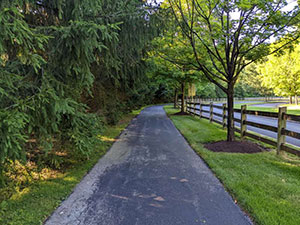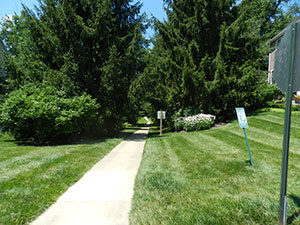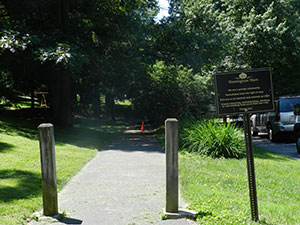Design Elements — Trails
Trails are off-road facilities that are designed and used for a variety of non-motorized forms of travel including walking, hiking, bicycling, cross-country skiing or horseback riding. Trails are designed according to their intended use. Trails intended for shared use by bicycles and pedestrians, especially those that are part of a multi-modal transportation network, should be designed according to AASTO standards for multi-use trails. Trails intended for more recreational uses like hiking or horseback riding have less stringent design standards and can be paved or unpaved, based on the intent of the trail, the amount of expected use, and the municipality's preferences.
Ordinance Considerations
Trails within a conservation subdivision may be designated specifically for the use of the residents of the subdivision or as public trails. A municipality should consider requiring public access to a trail if it provides an important connection between two destinations (like a school and a park), if it connects to a public trail on an adjacent property, or if it is part of the municipality's designated trail/active transportation network. Because there are different types of trails, a municipality may wish to define each type within the Definitions section of the zoning and/or subdivision ordinance and specifically require a certain type of trail within the conservation subdivision (for example, a multi-use trail). If a municipality has a map of its desired trail network, ordinances should refer to this map and require developers to construct trails shown on the map, or to connect to trails on adjacent parcels. Requirements for the provision of trails can be included in the general design standards of the subdivision and land development ordinance.
Example Ordinances
- East Whiteland Township has a comprehensive ordinance language for the requirement of trails, sidewalks, and on-road bicycle facilities within their Subdivision and Land Development Ordinance.
- East Brandywine Township's Subdivision and Land Development ordinance contains a section describing the preservation of existing trails on a tract, when new trails are required, and design standards for new trails.




